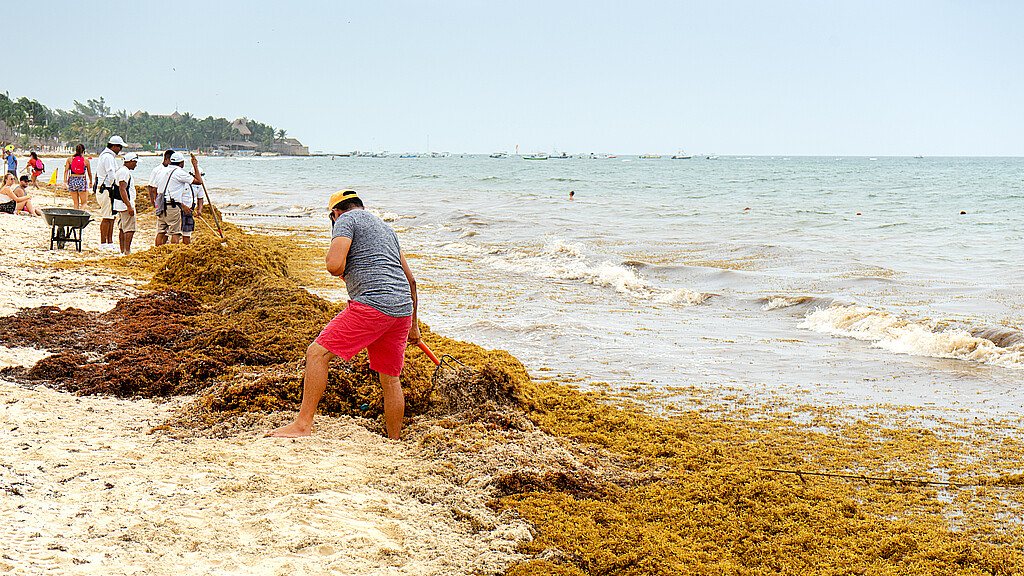Technology
Satellite images show massive seaweed belt inching toward Florida
Sargassum is not an unusual phenomenon, however, the satellite images show that this might be one of the largest accumulations to ever happen in the open ocean

March 27, 2023 8:43am
Updated: March 27, 2023 8:43am
Recently released satellite images show a 5,000-mile seaweed belt across the Atlantic Ocean inching its way toward Florida and the Caribbean.
The giant blob of smelly seaweed, known as sargassum, is a naturally occurring type of microalgae that has grown at an alarming rate this year, threatening to be the largest on record yet.
New satellite images released by the University of South Florida College of Marine Science Oceanography Laboratory show the belt of seaweed in the Atlantic Ocean stretching from the Gulf of Mexico to the west coast of Africa.
The Sargassum Watch System (SaWS) tracks the seaweed in “near-real-time” using satellite data and models. Sargassum is not an unusual phenomenon, however, the satellite images show that this might be one of the largest accumulations to ever happen in the open ocean.
Sargassum seaweed density in the Atlantic, from Marsh 1rst to Marsh 10th 2023#sargasses #sargazo #sargassum #sargassummonitoring
— Sargassum Monitoring® (@SargaMonitoring) March 12, 2023
@ USF - Satellite-based Sargassum Watch System (SaWS) pic.twitter.com/GEAL4A85KP
The blob of more than 10 million metric tons of sargassum is expected to pile up along the white-sand Caribbean beaches in the next few weeks, raising concerns among residents.
In normal quantities, sargassum creates value for the ecosystem. Yet, when sargassum piles up on beaches it decomposes, giving off a rotten egg smell and can cause breathing problems and burning eyes for people nearby. Other species of algae are known to produce toxins that affect the food chain or deplete oxygen from the water, causing marine life to die.
Others are worried that the unsightly piles of seaweed can affect the tourism industry in the area.
“This is an entirely new oceanographic phenomenon that is creating such a problem — really a catastrophic problem — for tourism in the Caribbean region where it piles up on beaches up to 5 or 6 feet deep,” said Brian Lapointe, an algae specialist and research professor at Florida Atlantic University's Harbor Branch Oceanographic Institute.










